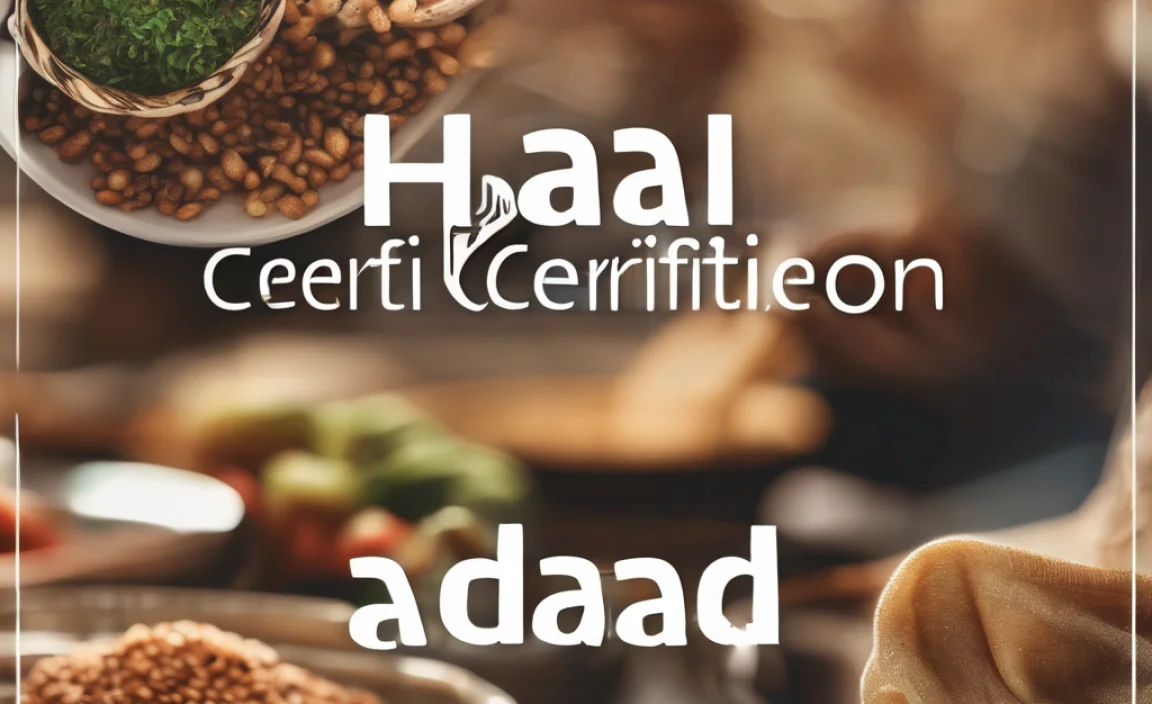Embark on a Thai Isaan Som Tam Crawl for an essential taste adventure! This guide unlocks the secrets to discovering authentic papaya salads, from market stalls to hidden gems, ensuring a flavor-packed journey through Thailand’s northeastern culinary heartland. Master the art of tasting and appreciating this iconic dish.
Ever dreamed of tasting Thailand’s most vibrant flavors? The iconic Som Tam, a spicy green papaya salad, is a must-try! It’s a dish bursting with fresh ingredients and a delightful kick. But finding the real deal, the kind that makes your taste buds sing, can feel like a treasure hunt. Don’t worry, finding amazing Som Tam is easier than you think. We’re going on a culinary adventure to explore the heart of its origin, Isaan, and discover why this salad is so beloved. Get ready to taste the true essence of Thailand!
Your Gateway to Isaan Som Tam: What to Expect
The “Thai Isaan Som Tam Crawl” isn’t just about eating; it’s an immersive experience into the soul of Northeastern Thai cuisine. Isaan, Thailand’s vast northeastern region, is the birthplace of Som Tam. Here, the dish is more than food; it’s a cultural cornerstone, a staple at every meal, and a reflection of the region’s resourceful spirit and bold flavors. A Som Tam crawl is your ticket to understanding this beloved dish in its most authentic habitat.
Think of it as a culinary exploration where each stop offers a unique rendition of the classic. You’ll encounter variations you might not find elsewhere, from subtle ingredient differences to entirely new flavor profiles. This journey is designed to be beginner-friendly, guiding you through what to look for, what to taste, and how to appreciate the nuances that make each Som Tam a unique creation.
The Heart of the Matter: Understanding Som Tam
At its core, Som Tam is a salad made from shredded unripe papaya. But labeling it just a salad does it a massive injustice. It’s a symphony of textures and tastes – spicy, sour, sweet, and salty, all balanced perfectly. The magic happens in the mortar and pestle, where shredded papaya is pounded with chilies, garlic, lime juice, fish sauce, palm sugar, and often tomatoes, long beans, and peanuts. The dressing is key, and its preparation is an art form. For a deeper dive into the cultural significance of Thai food, the University of Kentucky’s Food Security & Nutrition Center offers some fascinating insights into Thai food culture.
Why is the Isaan Som Tam Crawl Essential?
Isaan is the undisputed homeland of Som Tam. While you can find Som Tam all over Thailand and the world, the versions made in Isaan possess a distinctive character. Thiscrawl is essential because it allows you to:
- Taste Authenticity: Experience Som Tam as it’s meant to be, made with local ingredients and traditional techniques.
- Discover Variety: Learn about the diverse regional variations of Som Tam, each with its own unique twist.
- Understand the Culture: Connect with the local way of life through its most iconic dish.
- Hone Your Palate: Develop an appreciation for the complex flavor profiles and learn to identify what makes a Som Tam truly exceptional.
- Support Local Vendors: Enjoy delicious food while supporting small businesses and street food vendors who are the guardians of this culinary heritage.
Planning Your Som Tam Adventure
Embarking on a Som Tam crawl requires a little preparation, but it’s all part of the fun! Here’s what you’ll need to get started.
Essential Tools (Metaphorical & Literal!)
While you won’t be pounding papaya yourself on this crawl, understanding the tools helps appreciate the craft.
- A Motivated Palate: Come with an open mind and a willingness to try new things. Your taste buds will thank you!
- Comfortable Footwear: You’ll be doing a lot of walking between stalls and markets.
- Small Bills/Coins: Many street vendors prefer cash, and smaller denominations make transactions smoother.
- Water: Essential for balancing the spice and staying hydrated.
- A Notebook or Phone: To jot down your favorite stalls, flavor notes, and memorable experiences.
- A Sense of Adventure: The most crucial tool!
Choosing Your Som Tam Scouting Grounds
Isaan is a large region, so focusing on a few key cities or provinces will make your crawl more manageable and enjoyable. Consider:
- Udon Thani: Known for its vibrant markets and bustling street food scene.
- Khon Kaen: A major city with a rich culinary heritage and many dedicated Som Tam vendors.
- Nakhon Ratchasima (Korat): One of the largest cities in Isaan, offering a vast array of Som Tam styles.
- Local Markets: Don’t underestimate the power of smaller town markets. They often hide the most authentic gems. Look for markets mentioned in local guides or recommended by locals.
The Som Tam Spectrum: Decoding the Varieties
The beauty of Som Tam lies in its incredible diversity. While the core ingredients remain, subtle changes create wonderfully distinct flavors. Here are some of the most popular variations you’re likely to encounter on your crawl:
Common Som Tam Types
Understanding these will help you navigate menus and make informed tasting choices:
- Som Tam Thai (ส้มตำไทย): The most internationally recognized version. It’s typically a bit sweeter and less spicy, often featuring peanuts and dried shrimp. It uses a dressing primarily of lime, fish sauce, and palm sugar.
- Som Tam Lao (ส้มตำลาว): This is the original and features a bolder, more pungent flavor. It often includes fermented fish sauce (padaek) for a distinctive funk, long beans, tomatoes, and a more liberal use of chilies. It’s a must-try for serious flavor seekers.
- Som Tam Pu (ส้มตำปู): Made with salted crab (pu), this version has a saltier, more umami-rich profile. The crab is usually small and briney, adding a unique texture and depth.
- Som Tam Thai Boo Pla Ra (ส้มตำไทยปลาแดก): A fusion that combines the sweeter Som Tam Thai base with the pungent fermented fish sauce (pla ra or padaek). This is a powerful flavor explosion!
- Som Tam Khor Mouy (ส้มตำคอหมูย): While not a type of salad itself, this often refers to Som Tam served with grilled pork neck. It’s a complete meal!
- Som Tam Kaeo Kam: This refers to a less common but delicious version made with pickled cucumber instead of papaya, offering a refreshing crunch.
Customizing Your Som Tam
Don’t be afraid to tell the vendor how you like your Som Tam! Here are some common requests and what they mean:
- “Mai Ped” (ไม่เผ็ด): Not spicy.
- “Ped Nit Noi” (เผ็ดนิดหน่อย): A little spicy.
- “Ped Mak” (เผ็ดมาก): Very spicy.
- “Ao Lao” (เอาลาว): Make it in the Isaan (Lao) style (meaning more pungent, often with pla ra).
- “Ao Thai” (เอาไทย): Make it in the Thai style (sweeter, less pungent).
- “Ao Pla Ra” (เอาปลาแดก): Add fermented fish sauce.
- “Ao Gung Haeng” (เอากุ้งแห้ง): Add dried shrimp.
- “Ao Takoa” (เอาถั่ว)**: Add peanuts.
The Som Tam Crawl in Action: A Step-by-Step Guide
Ready to dive in? Here’s how to make your Som Tam crawl a delicious success.
- Start at a Bustling Market: Markets are usually treasure troves of incredible food. Look for stalls with a queue of locals – that’s always a good sign!
- Observe the Preparation: Watch how the vendor pounds the ingredients. Notice the freshness of the papaya and other vegetables. Authentic preparation involves skill and speed.
- Choose Your Base and Style: Decide if you want classic papaya (green), or perhaps a variation like dried shrimp or salted crab. Then, specify your spice level and whether you prefer it Thai or Lao style.
- Taste and Adjust (If Possible): If the vendor offers, take a small taste before they finish. You can then request adjustments to spice, sourness, or sweetness.
- Pair Wisely: Som Tam is often enjoyed with sticky rice (khao niao), grilled chicken (gai yang), or grilled pork neck (kor moo yang).
- Move On: Don’t stick to just one vendor! Try several different stalls or restaurants to compare flavors and experience the variety Isaan offers.
- Take Notes: Record your favorites and why you liked them. This helps you remember what to seek out on future crawls.
Essential Som Tam Pairings
Som Tam is rarely eaten alone. It’s part of a broader culinary tapestry. Here are some classic companions that elevate the Som Tam experience:
| Dish Name (Thai) | Dish Name (English) | Description | Why it Pairs Well |
|---|---|---|---|
| ข้าวเหนียว (Khao Niao) | Sticky Rice | Steamed glutinous rice molded into balls. | Its chewy texture and mild flavor are perfect for soaking up the dressing and balancing the spice of Som Tam. |
| ไก่ย่าง (Gai Yang) | Grilled Chicken | Marinated and grilled chicken, often served with a dipping sauce. | The smoky char and savory flavor of grilled chicken create a satisfying contrast to the fresh, tangy salad. |
| คอหมูย่าง (Khor Moo Yang) | Grilled Pork Neck | Tender, fatty pork neck grilled to perfection. | The rich, succulent pork is a decadent counterpoint to the bright, spicy Som Tam, offering a luxurious mouthfeel. |
| ผักสด (Pak Sod) | Fresh Vegetables | A platter of raw vegetables like cabbage, long beans, and basil leaves. | Provides a refreshing crunch and a clean taste to cleanse the palate between bites of spicy salad. |
| ลาบ (Larb) | Minced Salad | A flavorful minced meat salad with herbs, lime, and chili. | Sharing a table with another Isaan staple like Larb showcases the depth of regional flavors and offers a different texture and spice profile. |
Beyond the Bowl: The Cultural Significance
The Som Tam crawl offers more than just delicious food; it’s a window into the heart of Isaan culture. This dish is a testament to frugal innovation, transforming humble ingredients into something extraordinary. It’s a communal food, often shared among friends and family, fostering connection and conversation.
The ubiquitous presence of Som Tam stalls, from busy city streets to quiet village corners, highlights its role as a daily staple. Watching vendors expertly pound their ingredients, sometimes for decades, is a display of respect for tradition and culinary skill. This crawl allows you to participate in this living culinary heritage, connecting with a tradition that is both ancient and vibrantly alive. For those interested in how food shapes community globally, resources like the Slow Food movement website often discuss the cultural role of food and local traditions.
Tips for a Savvy Som Tam Connoisseur
Elevate your crawl experience with these insider tips:
- Trust the Locals: Always look for stalls with a good local following.
- Don’t Fear “Pla Ra”: While potent, fermented fish sauce is key to authentic Isaan flavor. If you’re feeling brave, try a small amount first.
- Embrace the Spice: Start with your preferred spice level, but don’t be afraid to push your boundaries slightly. The fresh chili is part of the experience!
- Explore Beyond Papaya: While green papaya is standard, try variations made with cucumbers, bananas, or mangoes if available.
- Look for Freshness: Ensure the papaya is crisp and fresh, and that the ingredients are vibrant green.
- Engage with Vendors: A smile and a few basic Thai phrases can go a long way. Vendors are often proud to share their culinary craft.
Troubleshooting Common Som Tam Challenges
Even on a culinary adventure, a few hiccups can occur. Here’s how to navigate them:
- Too Spicy? Order a side of sticky rice or fresh vegetables to help counteract the heat. Next time, ask for less chili.
- Too Sour/Sweet/Salty? This is where open communication helps. Politely ask for a little adjustment if possible, or simply note it for the next vendor. Remember, each stall is unique.
- Unfamiliar Ingredients? Ask the vendor what they are! It’s a great learning opportunity.
- Language Barrier? Pointing to what you want, using a translation app, or showing pictures can be very effective. A friendly smile and gesture usually convey intent.
FAQ: Your Beginner Som Tam Questions Answered
Q1: What is the main ingredient in Som Tam?
A1: The primary ingredient is shredded unripe green papaya. Other common additions include tomatoes, long beans, chilies, garlic, lime, fish sauce, and palm sugar.
Q2: How spicy is Som Tam usually?
A2: It can range from not spicy at all to extremely spicy. You can always request your preferred spice level. “Mai ped” means not spicy, while “Ped mak” means very spicy.
Q3: What’s the difference between Som Tam Thai and Som Tam Lao?
A3: Som Tam Thai is generally milder, sweeter, and might include peanuts and dried shrimp. Som Tam Lao is bolder, often more pungent, uses fermented fish sauce (pla ra), and is typically spicier.
Q4: Is it okay to eat street food Som Tam in Isaan?
A4: Absolutely! Street food is a huge part of Thai culture, and many vendors are highly skilled and maintain excellent hygiene. Look for busy stalls with locals.
Q5: What is “Pla Ra” or “Padaek”?
A5: It’s a crucial ingredient in many Isaan dishes, including Som Tam. It’s a type of fermented fish sauce that gives a distinctive pungent, umami flavor. It’s an acquired taste for some but essential for authentic Isaan flavor.
Q6: Can I get Som Tam without papaya?
A6: Yes, while green papaya is classic, you can find variations using ingredients like pickled cucumbers (Som Tam Kaeo Kam), bananas, or even carrots.
Q7: How much does a plate of Som Tam typically cost?
A7: Prices vary by location and vendor, but expect to pay anywhere from 20-80 Thai Baht per plate, making it a very affordable culinary adventure.
Conclusion: A Flavorful Finale
Embarking on a Thai Isaan Som Tam crawl is more than just a culinary quest; it’s a deep dive into the heart of Northeastern Thai culture. From understanding the nuances of its diverse variations to savoring each spicy, sour, sweet, and salty bite, this adventure promises unforgettable flavors and experiences. You’ve learned what to expect, how to customize your order, and what to pair with this iconic dish. So, pack your curiosity, trust the locals, and let your taste buds lead the way. The world of authentic Isaan Som Tam awaits, ready to amaze you with its vibrant spirit and incredible taste!




